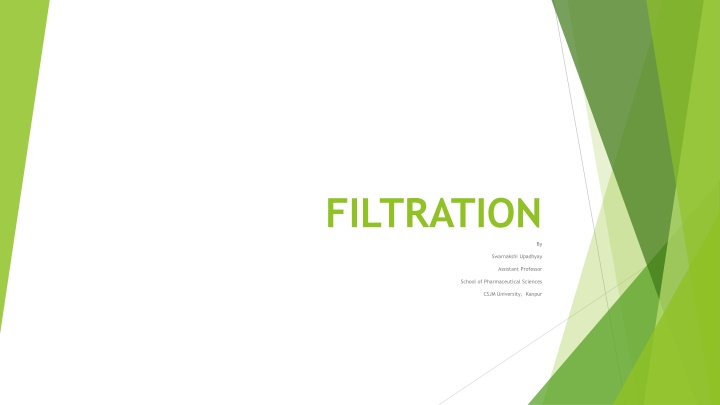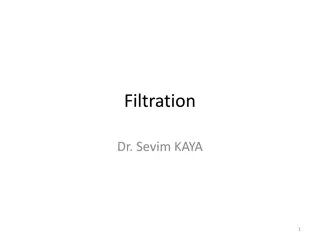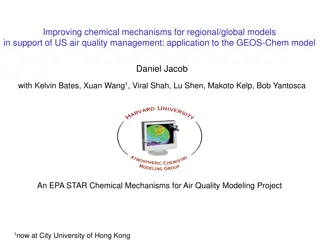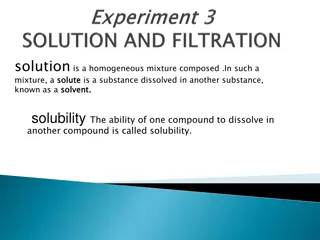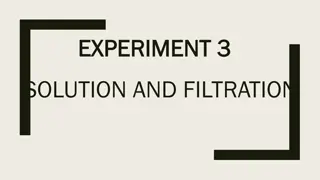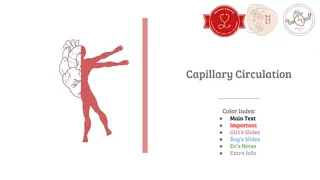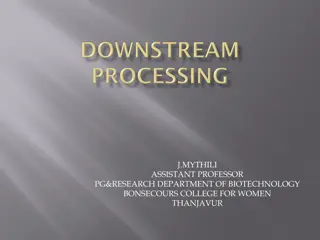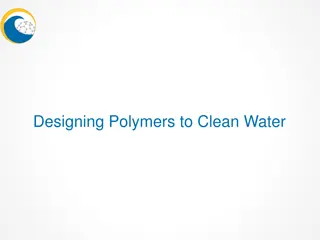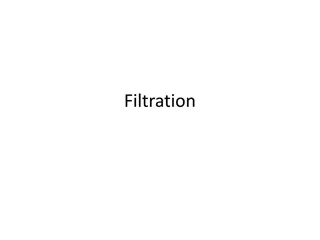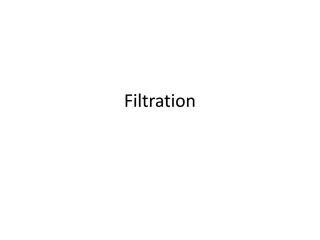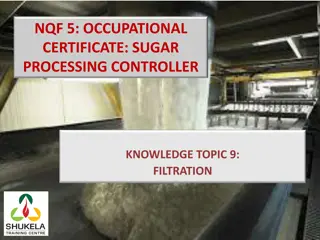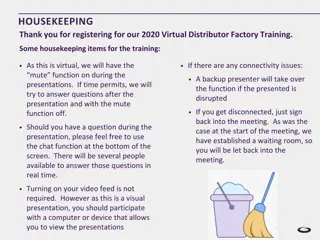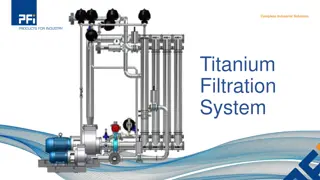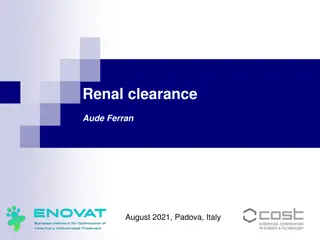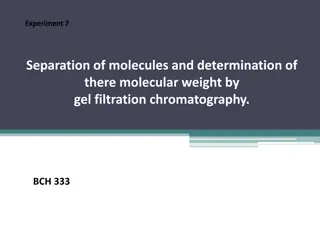Filtration: Process, Applications, and Mechanisms
Filtration is a process of separating solid particles or suspended matter from liquid or gas by passing it through a porous medium. This article discusses the definition of filtration, factors affecting its rate, applications in various industries, mechanisms involved, and different types of filtration methods like depth filtration. The content highlights the importance of pressure, viscosity, surface area, temperature, and other factors in the filtration process, along with the role of mechanisms such as straining, sedimentation, impaction, interception, adhesion, flocculation, adsorption, and biological growth. Additionally, it covers applications of filtration in producing sterile products, bulk drugs, liquid oral formulations, and wastewater treatment.
Download Presentation

Please find below an Image/Link to download the presentation.
The content on the website is provided AS IS for your information and personal use only. It may not be sold, licensed, or shared on other websites without obtaining consent from the author.If you encounter any issues during the download, it is possible that the publisher has removed the file from their server.
You are allowed to download the files provided on this website for personal or commercial use, subject to the condition that they are used lawfully. All files are the property of their respective owners.
The content on the website is provided AS IS for your information and personal use only. It may not be sold, licensed, or shared on other websites without obtaining consent from the author.
E N D
Presentation Transcript
FILTRATION By Swarnakshi Upadhyay Assistant Professor School of Pharmaceutical Sciences CSJM University, Kanpur
Introduction Filtration is defined as the removal of solid particles or suspended matter from the liquid or gas by passing it through a porous medium which retains the solid particles but allows the fluid to pass is known as Filtration. Or Filtration may be defined as the separation of intracellular liquid from solid by the use of pressure on semi permeable membrane. The pores medium used to retain the solids is known as filter media. The solids which get collected on the filter is called filter cake. The spear liquid passing through the filter is known as filterate. Clarification:- It is defined as the removal of solids in very less concentration and filtrate is the required product. Concentration is nearly less than 1% then only it is called clarification.
Factor Affecting the Rate of Filtration Pressure: The rate of filtration is directly proportional to the pressure difference between the filter medium and filter cake. Viscosity: The rate of filtration is inversely proportional to the viscosity of the liquid undergoing Filtration. Surface area of filter medium: The rate of filtration is directly proportional to the surface area of filter media. Temperature liquid to filtered Particle size Pore size of filter media Thickness of cake Nature of solid material. Gravity forces Filter aid
Application of Filtration Production of sterile products Production of bulk drugs Production of liquid oral formulation Affluent and waste water treatment
Mechanism of Filtration Straining: The particles which are larger than the pore space of the filtering medium are strained out mechanically. While particles smaller than the pore space are trapped within the filter. Sedimentation: The particles within the filter settle on the filtering medium. Impaction: Heavy particles do not follow the streamlined flow. Interception: The particles are removed during contact with the surface of the filter medium Adhesion: The particles adhere to the surface of the filter medium as they pass Flocculation: It occurs within the interstices of the filter medium. Chemical Adsorption (ie. Bonding, chemical interaction) and Physical adsorption (i.c. Electrostatic force, van der wall force): Once a particle has come into contact with the surface of the filter medium or with other particles, one of these mechanisms, chemical or physical adsorption or both may occur. Biological growth: The biological growth inside the filter reduces the pore volume and improves the removal of particles with any of the previous removal mechanisms
Types of Filtration Depth filtration: In this method, the removal of suspended material from the liquid suspension is performed by passing the liquid through a filter bed composed of a granular or compressible filter medium. The material used for the filter bed is a packed bed of sand, anthracite, or other granular media. Solids (particles) get attached with gradient density structure to the media by adsorption by physical restriction. This method is used in the treatment of surface waters for potable water supply. Surface filtration: Surface filtration involves the removal of material suspended in a liquid using sieving. In this method, the liquid passes through a thin septum (ie, filter material). Materials that have been used as a filter septum include woven wire cloths, cloth fabrics of different fabrics, and a variety of synthetic materials Membrane Filtration: Membrane filtration is a separation process that uses a semipermeable membrane. It consists of two parts: permeate containing the material that passes through the membranes, and retentate includes species being left behind. Membrane filtration can also be classified in terms of the size range of the permeating species, the rejection mechanisms, the driving forces employed, the chemical structure and composition of the membranes, and the geometry of the construction. The most important types of membrane filtration are microfiltration (MF), ultrafiltration (UF), nanofiltration (NF), and Reverse osmosis (RO). 1. 2.
